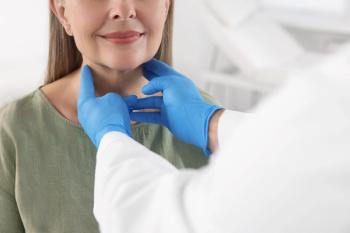
Shaping the Future of Pharmacy Leadership Through Complementary Perspectives at UNC Health

Two pharmacy leaders at UNC Health share how their distinct yet complementary leadership journeys and skill sets are driving innovation in clinical practice, education, and team development across the health system.
Leadership in health system pharmacy takes many forms—whether through structured administration pathways or organic, experience-driven growth. At UNC Health, 2 dynamic leaders are working in tandem to transform clinical practice, education, and team development across the care continuum. Emily Lineberry, PharmD, MS, a director of pharmacy in clinical and academic services at UNC Health in Chapel Hill, North Carolina, and Kamakshi Rao, PharmD, BCOP, FHOPA, FASHP, a director of pharmacy, oncology and infusion services at UNC Medical Center in Chapel Hill, bring distinct but deeply aligned approaches to leadership: Lineberry through her early commitment to clinical operations and administrative training, and Rao through a progressive evolution from bedside oncology pharmacist to educator, program builder, and strategic advocate.
In this Pharmacy Times® interview, Lineberry and Rao reflect on their respective journeys into leadership, the value of mentorship and process improvement, and the power of collaboration between leaders with different strengths but shared goals. Together, they illustrate how diverse leadership pathways can converge to support meaningful change in pharmacy practice and professional development.
Pharmacy Times: What was your pathway into leadership at UNC Health?
Emily Lineberry, PharmD, MS: About 6 years ago, I started in this role as a clinical manager at UNC Hospitals, and so even when I was as far back as high school, I knew I was interested in pharmacy, and I have this passion for being part of the medical field. So, once I started in pharmacy school, I loved clinical pharmacy. The practice of helping a patient and learning that I could do that outside of a brick and mortar, but at the bedside, talking to that patient and talking to their family. So, my passion for that, I would say, started early in pharmacy school, and then once I saw all that a pharmacist is involved with and the impact that they can make, I realized I love that, but I also really like the behind-the-scenes more. So, I don't necessarily need to be at the bedside every day, but if I can work with a pharmacist to make their job easier, to make the outcomes that they can produce even broader, that's what I want to do.
So, early on into my fourth year of pharmacy school, I decided to go into pharmacy leadership and pursue the health system pharmacy administration residency program. It's now the pharmacy administration and leadership residency program. So, I was able to do that at The Ohio State University. Went there for 2 years and put that in a master's degree, and again, came out knowing I really wanted to be involved in clinical practice. So, it was very fortunate to come back to UNC Hospitals and start as a clinical manager for the acute care team.
So for the first 5 years, I worked with those pharmacists across medicine, surgery, heart and vascular critical care, emergency medicine—a lot of the bread and butter of pharmacy practice—and I was able to really grow that team and encourage them to reach more patients than we had been, in different ways, than we also had been. So that's really how I got to where I am. I now work with ambulatory care pharmacists as well in the specialty and primary care practice settings, and also [am] starting to work with our future generation of pharmacists. So, our learners here at our school of pharmacy, as well as our pharmacy residents in our training program.
Kamakshi Rao, PharmD, BCOP, FHOPA, FASHP: I come at leadership a little bit of a different way. So, I've been a pharmacist for 25 years now, and when I graduated from pharmacy school, I honestly thought I would be a practicing clinician at the bedside for my entire career.
I started as a clinical oncology pharmacist and found really great reward in that. I love being in front of patients, talking to families, explaining and demystifying treatments. It was really very rewarding for me. I think the first inkling I had, and honestly, I would say, I never thought I was going to be a leader. I've never really thought of myself as someone who would, like, command a room or sit in front of a group and be so compelling. I really felt comfortable doing the day-to-day work. I think I recognized maybe the smallest inkling was really when I saw opportunities in our process and opportunities to make our program better. When I saw missing opportunities for pharmacists to get involved and do things, then I got really excited about building that next opportunity.
So, I started as an inpatient pharmacist, saw an opportunity in the outpatient setting, went and built it, and occupied it for myself. And then I saw the opportunity to be a better educator and became a program director, and saw opportunities to maybe better all our residency programs and became a manager. I don't think at any time it occurred to me that, like, “Oh, now I'm a leader.” Instead, I was like, “I am helping the people in the way I see best represents my ability.”
Then I think, coming back, I more recently returned to oncology as a leader, and it's been a really amazing homecoming to go back to where things started as a clinician for me, and now be able to have an impact on the people that are motivated the way I was motivated 15 years ago. It's very rewarding to have my work be to make their work better. I know I had great mentors and leaders along the way that opened my eyes to the potential that comes from that, and I really hope I can do that in the future.
I would say it's really amazing to work alongside leaders who come from it with a different angle. Emily and I work together pretty consistently, and I think what we bring to the table is 2 very different skill sets that are very complementary. When it comes to the nuts and bolts and how to really conceptualize and visualize a practice-changing initiative, that's like her superpower. But I really love the idea of how do we make this connect with our teams? How do we speak the language of a practicing pharmacist and make sure it's on their radar? So, in my opinion, the best leadership team is one that has lots of different perspectives at the table.
Newsletter
Stay informed on drug updates, treatment guidelines, and pharmacy practice trends—subscribe to Pharmacy Times for weekly clinical insights.


















































































































































































































